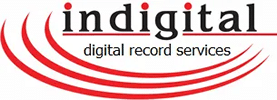As you convert paper files to digital files, you can choose many ways to organize and access the digital documents. One option you have is the use of barcode technology. Typically associated with products at the store, barcodes allow you to organize specific documents and groups of documents with easy access options.
Learn about four ways to use barcodes as you plan out your digital scanning services and expand your business’s digital platform.
1. Barcode Coversheets
If you have large batches of files you want to keep organized, consider printing out a barcode coversheet. The coversheet will have a barcode to easily sort and organize files associated with data linked to the barcode. For example, if you have a patient’s medical records, then you can print out a barcode coversheet and use it for the whole batch of files.
With the coversheet, you do not need to manually label or tag each file from an individual. You will remain organized and save a lot of time through the scanning conversion. You can print out coversheets for each patient or rely on professional scanning services. A company will add the coversheet and data for each section.
When you need to access information, you can scan the barcode or use the search perimeters associated with the barcode. The coversheets ensure files do not get missed through the tagging process.
2. Barcode Labels
In some cases, you will have individual files, contracts, or documents that do not belong in a big group. One of the easiest ways to organize these files is with printed barcode labels. The labels can go directly on the sheet of paper and the barcode is read by digital scanning technology to sort and tag the files without manual effort.
For example, if you have receipts or invoices needed for taxes, you can rely on barcode labels to organize everything into a single tax folder. For each new piece of paper, you can simply attach the label, put it in a pile, and then have everything digitally converted.
3. Barcode Font Downloads
Even after you’ve converted all of your printed files, chances are you will build up more in the future. As customers or patients fill out paperwork or sign documents, you can remove an extra organizational step with barcode font downloads.
The use of a barcode font allows you to add in custom text to represent a barcode. For example, if you have a contract for a person, you could create a barcode that reads “*contractJohnSmith*” and the barcode will create the data for you. With the barcode printed right on the document, you can easily scan and index the file once it is filled out and signed.
The barcode font works with most document software and is easy to add in the header or footer of a document.
4. Advanced Barcodes
Along with traditional barcodes, scanning technology gives you the option for more advanced barcodes. Advanced barcodes like a QR code or Data Matrix can include even more data than a traditional barcode. For example, you can include years, dates, and additional organizational options for the barcode entry.
Once you set the data point for these barcodes, scanning technology will do the rest and provide detailed information to connect the digital data. When you need to search specific papers, you can be very specific so you do not have to hunt and explore multiple folders on network systems.
These barcodes often take up less space on a piece of paper as well, so you can squeeze the barcodes in without covering up other information or wasting extra paper.
Contact us at Indigital to help plan out the use of barcodes at your business. We have years of experience dealing with barcode technology and can guide you through a step-by-step process to help keep your business organized.

